Text and photos by Steve D’Antonio
Copyright © 2017
From the Masthead
About a year ago a client of mine, I’ll call him Frank, had text exchange with a marine industry contractor, let’s call him Bill. Frank asked Bill to carry out some routine work on his boat, work Bill has undertaken for Frank on other occasions in the not too distant past. The price Bill quoted, however, was twice what it had been previously. Granted, Frank now had a new boat, but the work was essentially the same, the same brand of equipment and a similar age. Frank was a bit taken aback and asked Bill if he’d reconsider. The way Frank phrased his request came out sounding as if he was bargaining or asking for a discount; he wasn’t. Bill’s responses were short to begin with and they became even shorter at this point; after a couple of exchanges Bill essentially said, “Thanks, you’ll need to find someone else”. Bill essentially fired Frank, an otherwise loyal customer.
Bill is good at what he does and is in demand, and I’m sure he thought, ‘I don’t need this’. Still, with each text message I cringed, both parties were heading toward the inevitable unhappy ending, and I watched it, the proverbial slow motion train wreck. Ultimately Frank hired someone else, who performed the work competently and effectively, so it’s unlikely he’ll ever call Bill again, and truth be told Bill probably doesn’t care. But is this the best course of events for both parties? No, absolutely not, it’s bad all around, Frank is unlikely to ever refer anyone to Bill and he’ll probably tell this story again and again. Bill is busy now because the economy is on the rebound, but as all of us old marine industry hands know, that can and will change. Good will is money in the bank, and it should be saved rather than squandered.
I’ve thought about this episode a great deal since it happened. The sequence and outcome could have been avoided entirely, and here’s how.
- When working with a marine industry contractor avoid using the word “discount”, it’s off-putting to marine industry professionals and rightfully so, why should they discount their efforts and hard-won experience? If the price is more than you can afford, or are willing to pay, you have a few options. You can shop around for the same quality work at a lower price, or you can say, “That’s more than I’ve budgeted for this project, is there any way to do it less expensively?” That leaves open the option for using different materials, or taking another less invasive, and perhaps less thorough, approach. If the contractor is the only person who does what he or she does well, in the region, and he or she is busy, be prepared for a “No”. There’s no harm in asking, provided it’s done professionally and respectfully.
- If you are a marine industry professional, and you are good at what you do, and you are in demand, you must resist the temptation every day to become over-confident, cocky or worse, develop a reputation for being a prima donna. That doesn’t mean you are obligated to negotiate or defend your fees if you don’t wish to, it simply means you say ‘no’ in a professional, polite manner, leaving the door open for the customer to agree to use your services on your terms. When asked to discount your fee, if you don’t wish to, simply say, “I’m sorry the fee is not negotiable, but I’m convinced the value you’ll get for that fee is undeniable, it includes xx years of experience, x professional certifications and $xxx,xxx worth of tools and equipment to do the job properly, and I stand behind my work. I’m certain you’ll be satisfied and I’m also happy to provide references”, delivered sincerely and without an attitude. That response, which should take no more than 30 seconds to deliver, will make it clear the fee is the fee, and it does so without animosity or hard-feelings.
- Finally, the Frank and Bill exchange should have quickly progressed to a phone call. As I’ve said countless times in customer service and communication seminars and workshops, it is very difficult to convey intent, sentiment and tone in an e mail or worse, a text. In Frank’s case, after he received the quote, which was double the previous fee, he should have called Bill and said, “Bill, maybe I misunderstood, but the fee is much higher than the last time you did this work for me, what’s changed?” The likelihood of a dispute being settled amicably is far greater when it occurs in a live conversation rather than electronically.
This month’s eMagazine feature article covers the all too important subject of electrocution prevention. I hope you find it both interesting and useful.
Electric Shock Drowning and ELCIs Explained
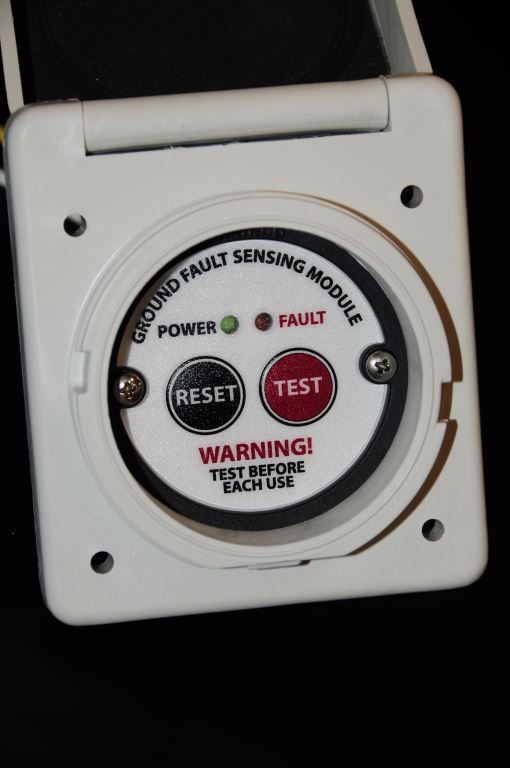
An equipment leakage circuit interrupter or ELCI, is capable of sensing faults in a vessel’s AC electrical system, whereupon it will turn off power in the blink of an eye, ideally before an injury or fire can occur. With few exceptions, ABYC and CE-compliant vessels must be equipped with this component.
In 2012 three cases of electrocution or electric shock drowning (more on that below) occurred over the Independence Day holiday. Tragically, they resulted in the deaths of four children, siblings Brayden and Alexandra Anderson 8 and 13 respectively, Noah Winstead, 10, and Nathan Lynam 11, and one adult, 26-year-old Jennifer Lankford. All of the events occurred on lakes, one in Tennessee and the two in Missouri. More recently, on April 20, 2017 three more cases occurred, in which 15-year old Carmen Johnson, 34-year-old Shelly Darling and 41-year-old Elizabeth Whipple were all killed while swimming in Alabama’s Lake Tuscaloosa. In June of this year five more people were killed at a water park in Turkey, again by electrocution or electric shock drowning.
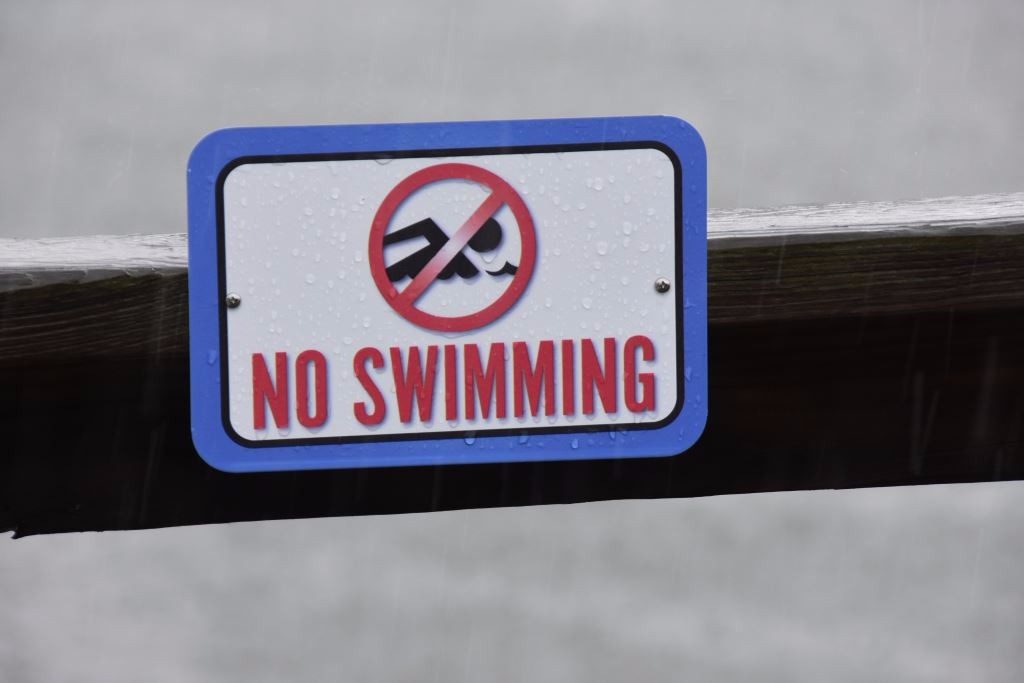
The most reliable way of preventing electric shock drowning is to avoid swimming around docks with shore power.
Each year electrocution, in most cases more accurately referred to as electric shock drowning or ESD, more on that in a moment, events such as these occur and each year a hue and cry goes out within the marine industry to educate boat owners, marina managers, marine electricians and swimmers about the dangers associated with swimming around boats that are plugged into shore power, or other shore power devices such as electric boat lifts. Sadly, for these people, most of whom are children, and their families, it’s too late; however, it’s not too late for you to learn about these potentially disastrous scenarios and how to avoid them.
ELCI’s
You would be hard pressed to find an adult who is unfamiliar with the ubiquitous Ground Fault Interrupter or GFI receptacle. Found in household kitchens, bathrooms, patios and garages among other locations, and recommend by the American Boat and Yacht Council for use in heads, galleys, engineering spaces and on the weather decks of boats, they have no doubt saved countless lives since their introduction in the late 1960s. Requirements for GFI’s have been part of the National Electric Code for over 50 years, with the first mandate being inspired by electrocutions caused by underwater lighting used in swimming pools.

In a properly functioning marine electrical system, the same amount of AC current flows in the hot and neutral wires.

However, if electricity “leaks” from this intended path in these two wires to ground, this condition is called a ground fault. A good example of this is an insulation failure in the wiring of an appliance.

In addition, a faulty ground can occur when the grounding path is broken through a loose connection or broken wire. For instance, a shore power cord ground wire may fail due to constant motion and stress.
Wiring diagrams and associated captions courtesy Blue Sea Systems.
While GFI’s have been covered in a previous column, there is yet another shore power safety device, one that was only introduced to the marine market within the last decade, that’s also worthy of attention. Referred to as an Equipment Leakage Circuit Interrupter or ELCI (sometimes referred to as RCD’s or Residual Current Devices), it offers yet another level of protection from shore power faults, fire and electrocution or ESD. Much like a common GFI receptacle (these have a comparatively low trip threshold of 5 milliamps, and as such are considered to be appropriate for protecting people, they represent local protection), ELCI’s remain in a state of equilibrium, allowing energy to flow, as long as the current on the hot and neutral wires, the two current carrying conductors found in most AC electrical circuits, remains the same. As soon as current finds an alternative path back to its source (contrary to popular belief, electricity does not seek ground, it seeks to return to its origin, in this example likely the transformer at the head of the dock), through a green safety ground wire, the water or a human, the imbalance trips the ELCI’s circuit breaker and the power is turned off nearly instantly, often within 30-70 milliseconds.
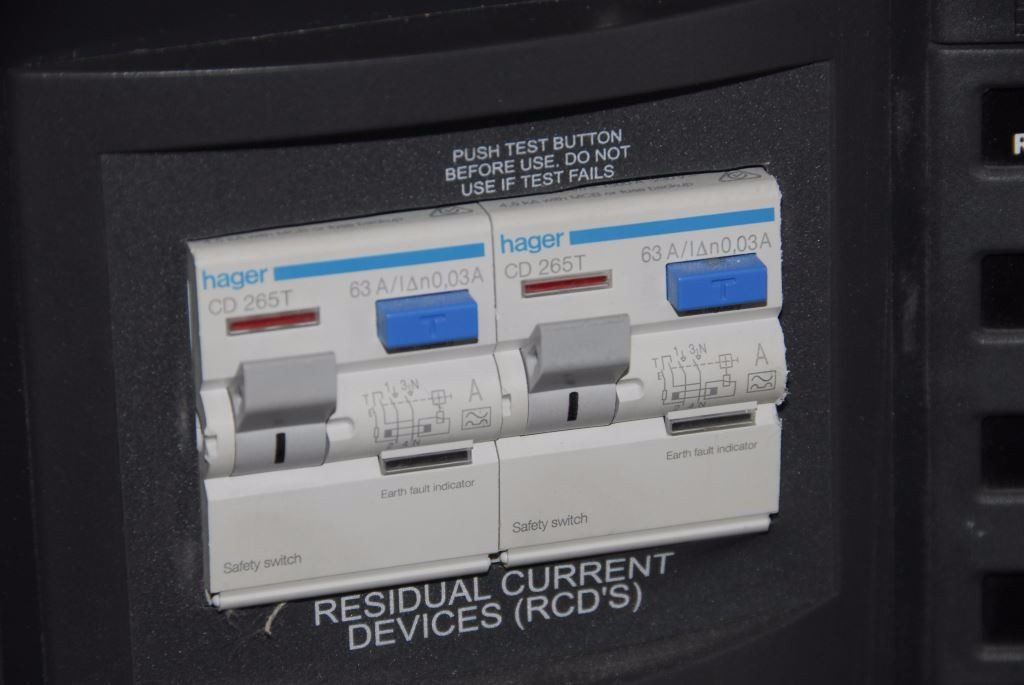
Like GFI’s, ELCI’s (sometimes referred to as RCDs) must include a test feature, the blue button with embossed T.
While technically deemed “equipment protection”, because of their 30 milliamps trip threshold, the goal of ELCI’s is to interrupt current flow quickly enough to prevent electrocution, electric shock drowning or fire, and for the most part they do so very effectively, saving, much like GFIs, countless lives every year.
The adoption of the ABYC ELCI Standard was, much like the GFI, inspired by a number of electric shock drownings or ESD’s. Different than a conventional electrocution, an ESD can, with comparatively little current flow, paralyze a swimmer’s voluntary muscle reflexes, causing him or her to drown, which only serves to mask the underlying electrically-related cause of death. For more on ESD and how it occurs and differes from conventional electrocution, see this Marine Systems Excellence article.
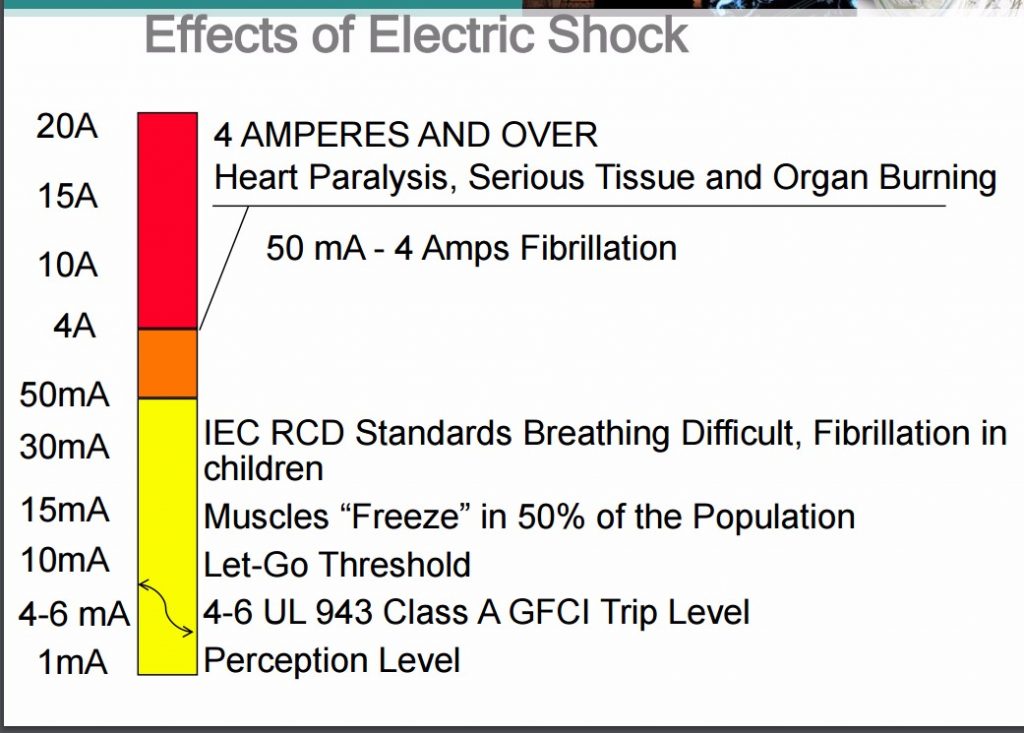
“Electrocution” is a broad term, and the range of current has many differing effects. Those that may be non-life threatening ashore, such as muscles freezing, can lead to drowning while swimming.
While it’s true that virtually all documented ESD cases have occurred in fresh water, the risk of swimming around docks and boats that are energized with shore power, in salt or fresh water, remains extremely high. Some will say, “It can’t happen in salt water”, and I cringe each and every time I hear this. There are several reasons this “theory” represents dangerous folly. One, it’s impossible to determine the salinity level of a body of water before jumping in to cool off. In estuarial waters like the ones where I live, on the Chesapeake Bay, salinity changes seasonally and even daily after heavy rains. Two, it’s impossible to rule out the potential for ESD or electrocution in seawater provided the current flow is high enough. Do you want to risk your life or the lives of your loved ones by testing this belief? Some have also said that if an ELCI, leakage warning system or transformer is used, it’s then safe to swim in the vicinity of energized docks and boats. Again, this is incorrect; it’s dangerous and risky at best.
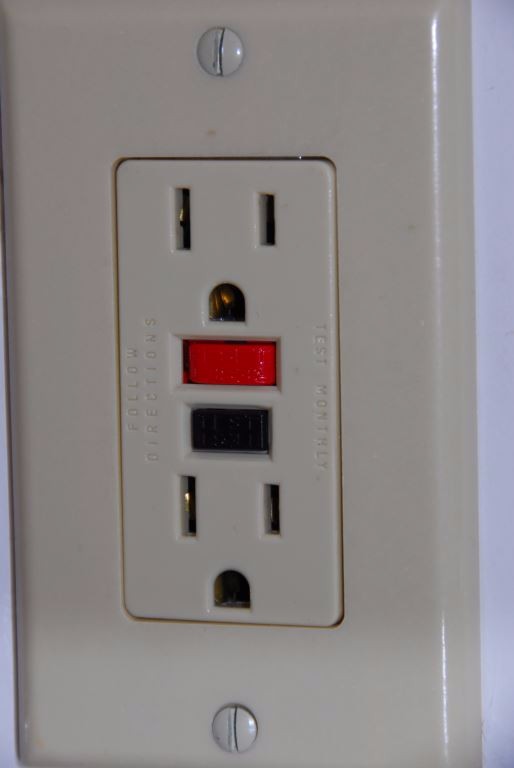
Ground fault interrupter receptacles have been around since the 60’s. Having saved countless lives in that time, they should be installed in a vessel’s head, galley, on weather decks and in engine rooms and machinery spaces. They provide local protection and are still required even for vessels equipped with an ELCI.
In addition to the trip threshold, the primary difference between the ELCI and its cousin the GFI, is the location in which it is installed. GFI receptacles are installed where power is to be used, galley, head etc, while ELCI’s are installed where power enters the vessel, near the shore power receptacle. Think of it as a whole boat GFI with some modifications. A primary shore power circuit breaker is already required for every shore power inlet, and in the case of an ELCI it is often installed either in conjunction with this breaker, or as a single combined unit, achieving the goals of over current protection and fault protection. It’s important to note that the presence of an ELCI does not negate the need for individual GFIs, both are still required for ABYC compliance.
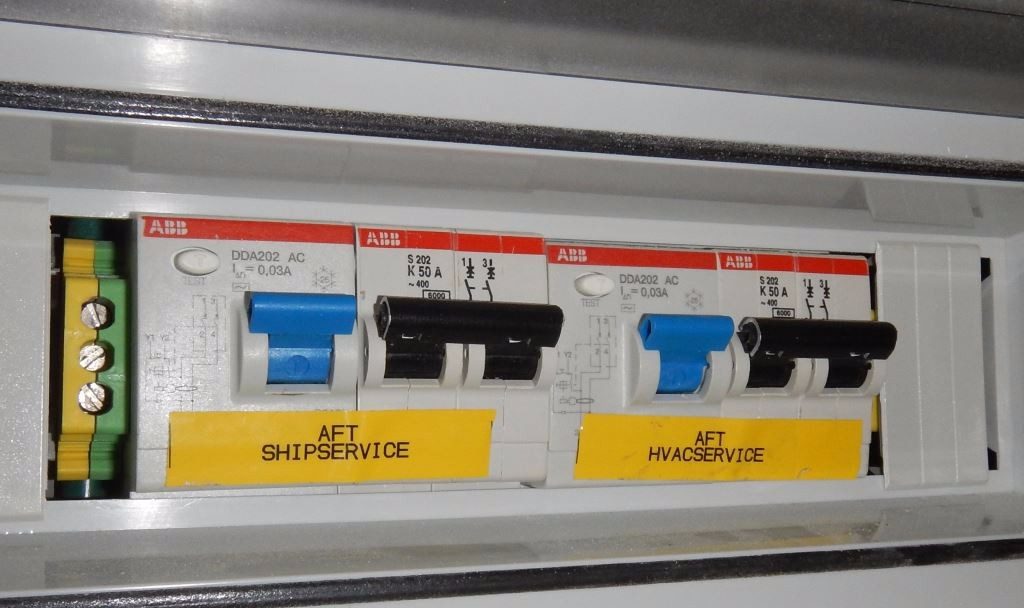
ELCI’s, the blue-handles, are often combined or co-located with primary shore power inlet circuit breakers, the black two pole devices to the right of the ELCI. Don’t assume an ELCI trip current is correct, as they are available in a wide range, from 5 mA through 100 mA. ABYC compliant ELCI’s should be designed to trip at 30 mA, those seen here indicate this in the “I=0,03A” shown on their face.
ELCI’s got off to a rocky start when they were first introduced to the ABYC Standards and the marine industry in 2008. As is often the case, the intent preceded the hardware, and as a result the implementation was postponed for a couple of years. Now, however, proprietary marine ELCI circuit breakers are readily available from several manufacturers in a range of configurations. With few exceptions, new vessels that are built, or those that are being refit, to ABYC (or European CE) Standards must be equipped with ELCIs, and with good reason; they save lives. An ELCI can be added to virtually any vessel’s shore power system provided it is free of faults.
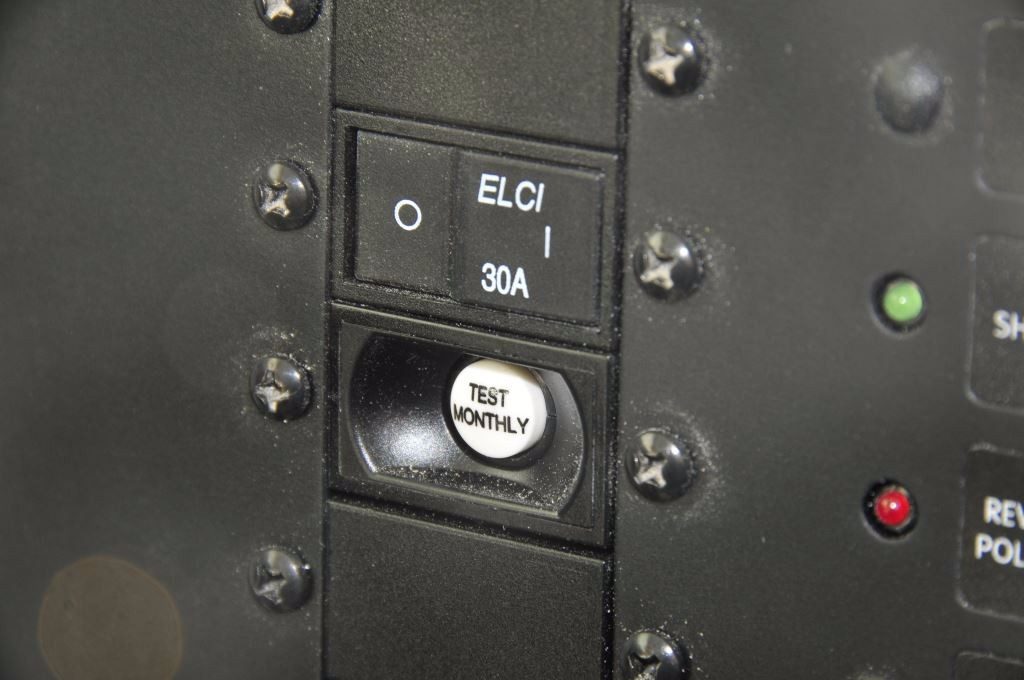
If the wire-run distance between the shore inlet and the circuit breaker panel is less than 10 feet, the ELCI may be located in the latter.
Folks often ask me when it’s OK to swim around docks, saying, ‘What if the vessel does have an ELCI?” or “The dock has a leakage warning system, is it OK then?”, or, “Can the water be tested before swimming?”. Unfortunately, the answer is no to all of these scenarios for a variety of reasons, including and especially because faults occur in a split second, one minute the water is safe, the next it’s deadly, and unless you can walk on water you can’t count on being able to get out of harm’s way quickly enough. Also, as wonderful as ELCI’s and GFCI’s are, they are not foolproof.
You might ask, “What about divers? I see them in the water in marinas all the time and they don’t get electrocuted”. Whenever I encounter one on a dock, and that’s often, I make it a point of asking, “Do you ever get shocked or feel a tingle?” Without exception every one has said yes, several have told me they can feel electricity coursing through their dental fillings. A dry, and even wet, suit does offer some protection against electrocution and ESD, which is why these folks probably haven’t become victims. They do this work at their own risk, hopefully knowing the hazards (one was killed recently in Florida, albeit by a bow thruster rather than ESD), a far different scenario from your child frolicking in the water on a seemingly care-free summer day.
Simply put, never swim around docks equipped with shore power in fresh or salt water. There are no exceptions to this rule.
Next month I’ll discuss shore power transformers and the role they play in electrocution prevention, and fault avoidance.



